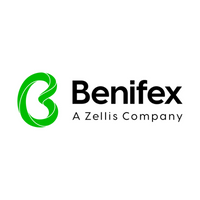How data is the key to creating more effective employee benefits
When it comes to use of data, 89% of reward and benefits professionals admit they could do better. Only 11% say their use of data and insight in supporting benefits provision is ‘excellent’. And 76% of HR and benefits leaders can’t show any return on investment on benefits.
This data gap is affecting how other areas of the business perceive the reward function’s ability to collect, analyse and use data to drive business outcomes. Only 6% of business leaders feel that their organisation does a good job of using data relating to employee benefits, trailing every other organisational function.
A lack of actionable insight is a common complaint across organisations who are trying to improve the employee experience, make real-time decisions and drive engagement. And reward teams are often held back by outdated systems, issues with integration, a lack of resources and the sheer scale of the task.
Catering to changing needs
Benefex interviewed thousands of employees and employers worldwide to understand employees’ ever-evolving needs and expectations – and how benefits and reward professionals are adapting their strategies in response.
The research shows that employee expectations continue to grow at pace across all areas, but particularly in relation to benefits; 52% of employees report that their expectations around benefits provision have risen over the last 12 months, according to the Benefex Evolution Report, 2023.
And employers feel the pressure to cater to these changing demands. Some 50% of HR and reward professionals report that employees want more flexibility and personalisation in benefits compared with 12 months ago and 48% state that employee expectations for wellbeing support have grown.
But how can organisations hope to deliver on employee expectations for personalised, relevant and engaging benefits experiences if they don’t have the right data systems in place to inform their strategy?
Benefits leaders need to be able to gain real insights into employee patterns and behaviours around benefits if they are to continually improve their offering.
Insights deliver better benefits
In benefits provision, HR leaders, and senior business leaders in general, feel they should be using benefits more strategically to deliver better outcomes for employees and employers.
Virtually all (99%) of benefits professionals believe data-driven benefits and reward can deliver better results. Some of the payoffs include improved engagement and retention (48%), an enhanced employer brand (42%), increased ability to attract high quality talent into the business (41%) and less administration (37%).
The link between benefits provision and employee attraction, engagement and productivity is clear.
Reward leaders are already moving beyond the annual benefits enrolment stats as the defining KPIs, elevating employee benefits out of the once-a-year selection window and turning them into an everyday resource for employees and an everyday part of the employee value proposition.
The big question for organisations is how they will harness the power of the data before them to create a better connection with employees and continually improve their global benefits programmes. That insight will drive the case for investment in benefits and reward to deliver better outcomes for employees and organisations alike.
What to look for in a global platform
When we asked reward leaders why data was important to them, 91% said ‘to improve benefits provision’, but 76% admitted they face challenges in turning data into actionable insight.
It’s all very well having lots of data, but to have strategic value it needs to be actionable. If it takes six months to crunch the numbers from your last enrolment, you’ve missed the window of opportunity to implement the changes that will improve engagement – for example, tailoring your benefits communication strategy to help employee understand specific benefits.
Of course, you need the right technology to be able make decisions that affect the bottom line. Yet, many benefits leaders struggle with their analytics systems. Barely half of employers can measure their total spending on benefits and assess its impact on employee engagement and wellbeing. And only 15% can do this in real-time.
Five questions to ask when looking for a new benefits platform:
- Does it provide real-time benefits costs, take-up and engagement information?
- Can you instantly understand your global benefits spend?
- Can you drill down by location, currency, provider and benefit type?
- Does it enable you to forecast the impact on spending, based on changes to headcount, costs and locations?
- Will you be able to benchmark your offering and employee engagement against your peers?
Explore the findings of our latest report, The Insight Edge.
Supplied by REBA Associate Member, Benifex
The home of award-winning employee benefits, reward, recognition, & communications.








